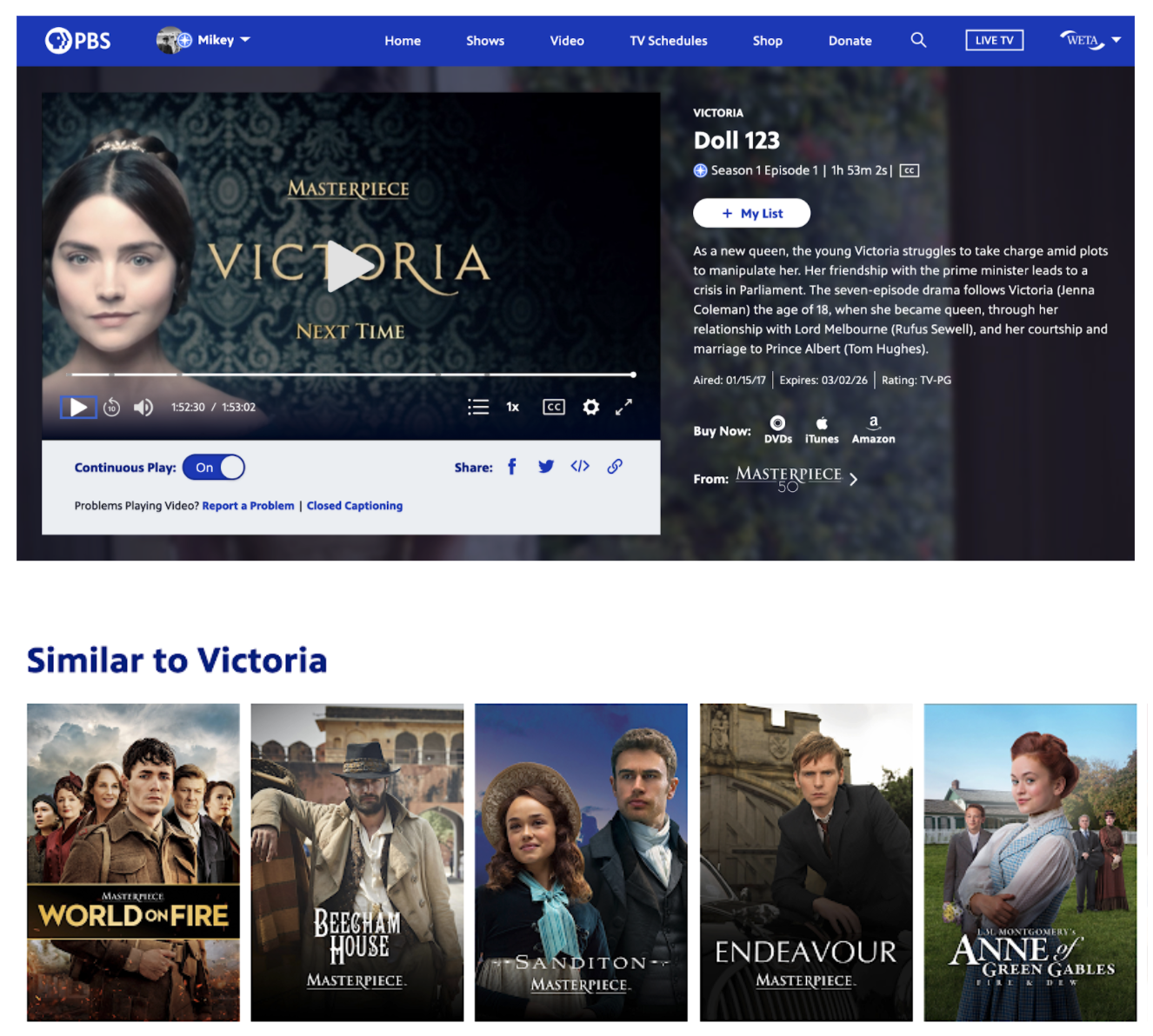Recommendation System
Project Overview:
Opportunities
We gave PBS the ability to deliver more personalized experiences to viewers and achieve the mission of showcasing programming meant to educate, inspire, entertain and express a diversity of perspectives. The recommendation system helps viewers search, find and discover amazing content. Further opportunities could be to add more logic, filter functions and additional ML models.

Prototype: Recommendation System
How It Works:
We established a data ingestion pipeline, it started by getting data about viewers from Google Analytics and PBS’ profile service, and data about videos from our catalog in PBS’ Media Manager tool, combined with interactions from viewers with those videos, and fed that into a data lake via glue step functions.
The data journey doesn't end when it lands into the cloud. It goes through a few more functions to be prepared for the machine learning operations procedures. Once processed, the ML model will begin analyzing and utilizing AI to make predictions on what videos to recommend. The recommendations are then sent back out to the front end for the viewer to react to. Viewers can also provide feedback to help train the model further and get them even more personalized results.
Key Features:
- Recommendations based on viewers watch history.
- Real time updates based on viewer feedback.
- Data ingestion pipeline and ML cloud operations.
Major Findings
Establishing a data infrastructure and a machine learning platform, this recommendation system equips PBS with the ability to offer viewers a personalized experience at scale.
Prototype Takeaways
What Went Well:
Not throwing in the kitchen sink; Setting attainable goals and reasonable parameters for this exact prototype.
What Were The Challenges:
Not including catalog meta data and excluding titles based on user’s location, membership status or windowing availability.
What Needs Improvement:
Building a beta integrated into PBS’ actual front and back end with features that viewers will appreciate.